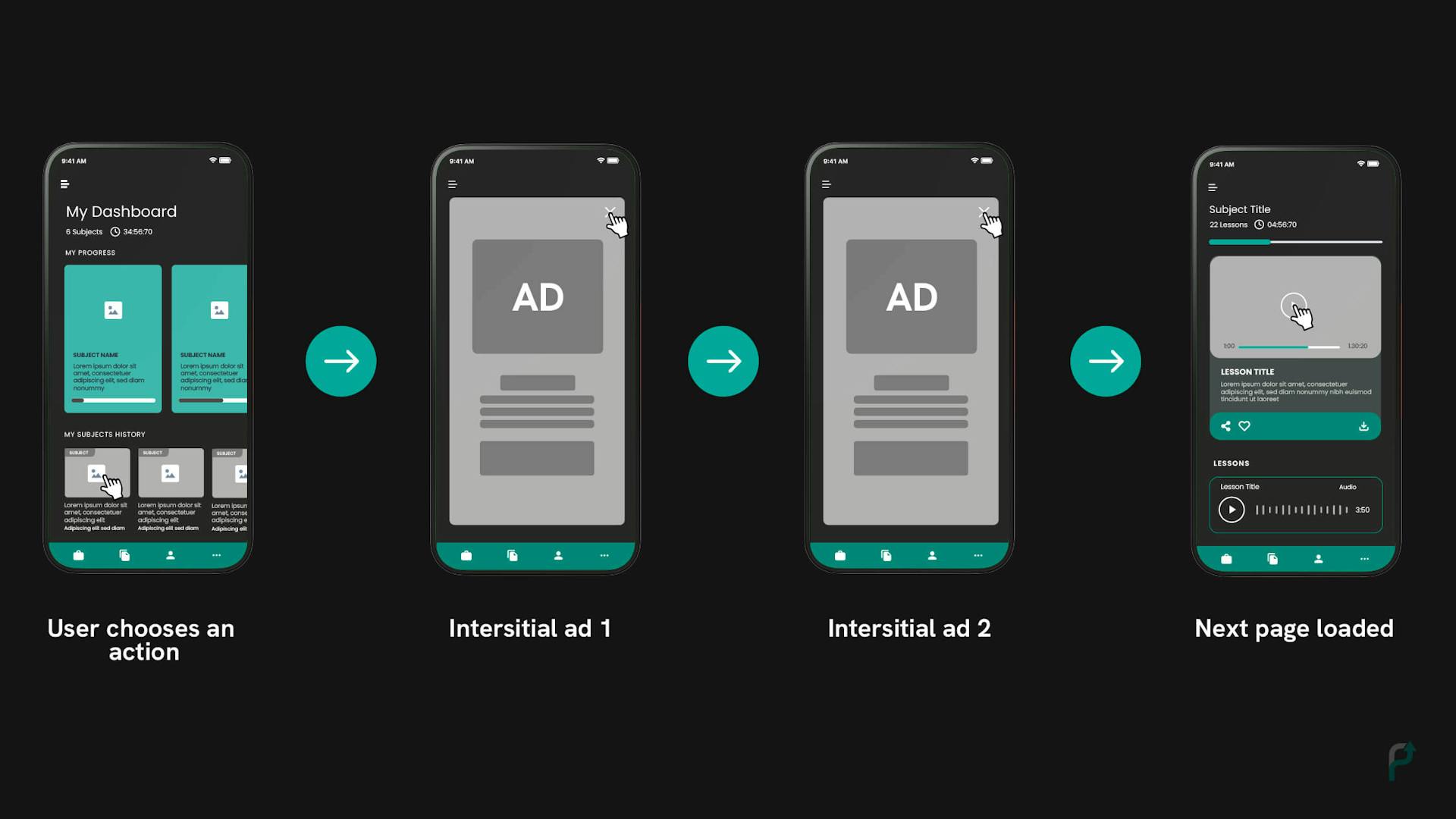Back to Policies
Repeated or recurring interstitials

What are repeated or recurring interstitials
Interstitials refer to pop-up ads between pages or during a user's browsing session on an app or a website. Interstitials cover the entire screen, and when they appear repeatedly or at regular intervals, they are called "recurring interstitials." For instance, displaying a pop-up ad for a particular product every time a user visits the website or clicks on a new page is an example of a repeated or recurring interstitial.
Even though recurring interstitials may be effective in creating brand awareness for an advertiser or promoting their products, they can also be perceived as intrusive or annoying by viewers or users, harming the overall user experience.
How it looks
Recurring interstitials, repeated interstitials, intrusive interstitials – all lead to policy violations. Incorrect implementation of interstitial ads can occur in the following ways:
-
Example 1: One interstitial ad after another
 One interstitial ad after another
One interstitial ad after another -
Example 2:
- Interstitials appearing each time the user transitions from one page to another
- Interstitial after every user action, for example, a click or swipe
- Interstitial when the user clicks the Back button
 Interstitials appearing each time the user transitions from one page to another
Interstitials appearing each time the user transitions from one page to another -
Example 3: Interstitial on opening or closing the app
 Interstitial on opening or closing the app
Interstitial on opening or closing the app -
Example 4: Interstitial that launches unexpectedly
 Interstitial that launches unexpectedly
Interstitial that launches unexpectedly
What are its consequences
The main reasons you must avoid repeated, recurring, or intrusive interstitials are as follows.
- Preventing accidental clicks: Those that may occur due to a sudden screen change.
- Maintaining user experience: It might frustrate the user and negatively impact user experience.
Google particularly discourages the use of repeated interstitials on mobile apps. Apps that:
- Cover the main content immediately after the user opens the app’s first screen.
- Display a standalone interstitial that the user has to dismiss before accessing the main content.
- Use a layout where the above-the-fold portion of the page appears similar to a standalone interstitial, but the original content is inlined underneath the fold.
Google may penalize the apps that deliver policy-prone ads, restrict ad serving on such apps, or even ban the app from monetization.
How to avoid it
Below are some positive practices that you can follow instead.
- You can place up to one interstitial ad after every two user actions.
- Limit the frequency of ads to one per session or as little as possible.
- Provide a clear Close button that is easily noticeable.
- Do not place ads such that they cover the main app content.
How to resolve it
Sometimes you may intend to load the ad before a new page loads. However, carrier latency may cause it to load slowly and cover the new page. To avoid this, Google recommends preloading the interstitial in advance. Furthermore, follow Google’s publisher policies to stay away from these violations.
How we help you resolve policy violations
Our dedicated account managers look into your app and website to identify any policy violations.
We suggest ad formats and placements that may perform best according to your app or website’s UI and UX.
If policy violations are detected, we provide suggestions and help you resolve them to ensure that monetization is not hindered.
We do a thorough audit on a regular basis to avoid policy violations and stalled revenue growth.

The only ad platform built for developers by developers.
Contact us now for a product that fits your needs! It’s quick, simple and easy.



